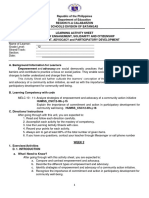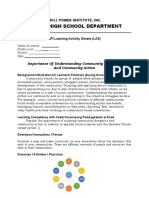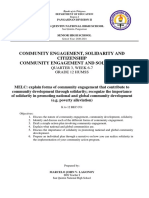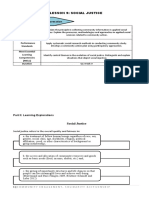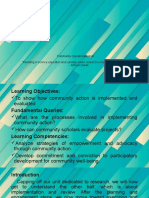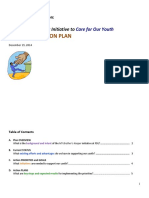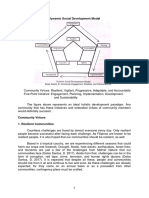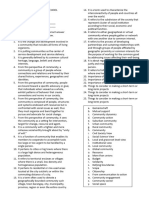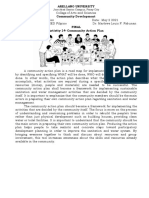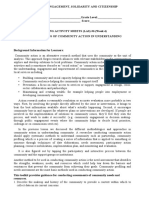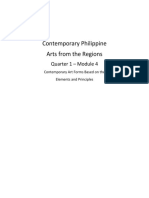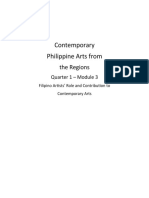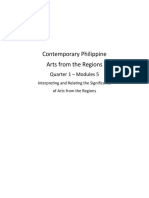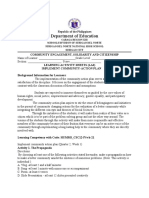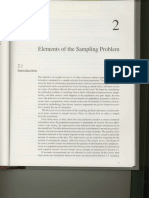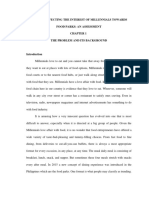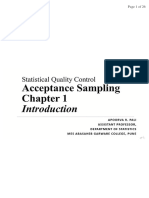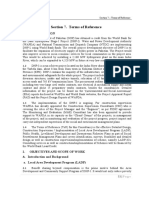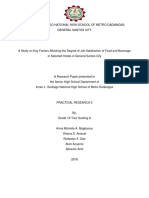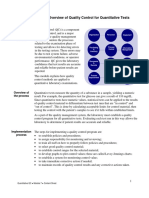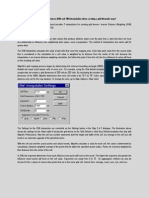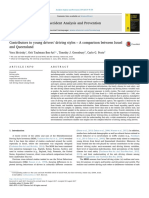0% found this document useful (0 votes)
652 views3 pagesDepartment of Education: Republic of The Philippines
This document provides guidance on conducting community needs assessments and applying systematic methods of community action. It discusses building community capacity, resilience, and empowerment through prevention, collaboration, and developing local services. Community profiling and needs assessment are identified as important initial methods. Steps are outlined for understanding a community's history, priorities, stakeholders, problems, resources and barriers. Tools are presented for resource mobilization, including grant proposals, fundraising, donations, volunteer support, and business projects. Learners are asked to assess statements on community action methods and identify steps for one method to apply to a community issue.
Uploaded by
Larry MartCopyright
© © All Rights Reserved
We take content rights seriously. If you suspect this is your content, claim it here.
Available Formats
Download as DOCX, PDF, TXT or read online on Scribd
0% found this document useful (0 votes)
652 views3 pagesDepartment of Education: Republic of The Philippines
This document provides guidance on conducting community needs assessments and applying systematic methods of community action. It discusses building community capacity, resilience, and empowerment through prevention, collaboration, and developing local services. Community profiling and needs assessment are identified as important initial methods. Steps are outlined for understanding a community's history, priorities, stakeholders, problems, resources and barriers. Tools are presented for resource mobilization, including grant proposals, fundraising, donations, volunteer support, and business projects. Learners are asked to assess statements on community action methods and identify steps for one method to apply to a community issue.
Uploaded by
Larry MartCopyright
© © All Rights Reserved
We take content rights seriously. If you suspect this is your content, claim it here.
Available Formats
Download as DOCX, PDF, TXT or read online on Scribd
/ 3








